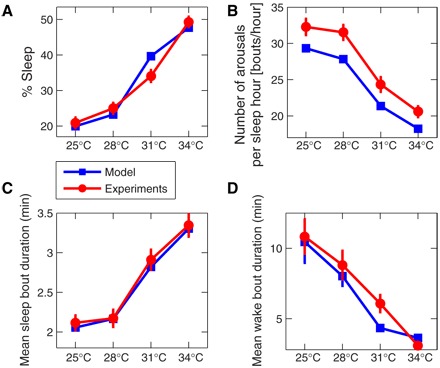Fig. 2. Sleep and wake characteristics of zebrafish larvae (red circles) compared to model simulations (blue squares).

(A) The percent sleep time for zebrafish larvae (blue squares) increases with increasing water temperature—from 20% at 25°C to 50% at 34°C. The same temperature dependence is also obtained for our model simulations, where increasing temperatures are modeled by decreasing neuronal noise levels (as measured by the noise SD σ; for more details, see Materials and Method). (C) The mean sleep bout duration shows similar behavior for increasing temperatures, whereas the number of arousals during sleep [shown in (B)] is decreasing with increasing temperature, with most arousals at low temperatures. Thus, the monotonous increase of total sleep time with increasing temperatures in zebrafish larvae is associated with longer sleep bouts. (D) The mean wake bout duration of zebrafish larvae decreases with increasing temperature, and this trend is also reproduced by our model. The great similarity in (A) to (D) between the experimental measurements obtained for zebrafish larvae under different water temperatures and the model results for different noise levels strongly supports our hypothesis that arousals/brief awakenings from sleep originate from neuronal noise. We examine for each larva the temperature dependence of the sleep/wake parameters in (A) to (D), applying to all 48 larvae in the database a one-way analysis of variance (ANOVA) with repeated measures (comparisons between all temperatures), and we obtain a P < 10−9 (all pairwise multiple comparisons by Tukey’s test yield P < 0.05, except at 25°C versus 28°C for the mean sleep bout duration and at 25°C versus 28°C for number of arousals per sleep hour). In all panels, for each temperature, we present the group average and SE of the 48 larvae during two dark periods (when zebrafish predominantly sleep) with 10-hour duration each, and the model results for each σ are obtained from 48 20-hour independent model simulations matching the duration of the 20-hour dark period. All model parameters are the same for each temperature, only the neuronal noise level σ is changed: For 25°C, we use ; for 28°C, ; for 31°C, ; and for 34°C, , where Δt = 0.08 s is the time resolution of each simulation.
